I got two coffins made of wood fibre. Are they ancient Egyptian mummies or something else?...
Most active audio enthusiasts know of the Clearaudio Statement – a behemoth of a turntable that weighs hundreds of kilograms and costs a six-figure sum. A little over a decade ago Clearaudio introduced their Innovation series of turntables – at that time the price tag was in the 10k range – and a few years ago Clearaudio came up with the latest flagship model in the series, Master Innovation, which is essentially two Innovations sandwiched into one. As Master Innovation seemed to have all the bells and whistles for the discerning enthusiast, and no one had ever imported one to Finland, at least via official channels, I thought I might as well be the first. A mini-statement for a “mini-Statement” if you will.

Unpacking and Installation
After a laborious unpacking session I finally managed to unbox everything and it was time to put the turntable together. Maybe it is the famed German efficiency, but the installation was straightforward and the instructions were clear. The only tricky part was connecting the top unit to the lower unit as the top unit weighed quite a bit and the magnetic field between the units didn’t make the operation any easier either. In this review I’m reviewing the Master Innovation turntable with a Durand Talea tonearm / Soundsmith Paua mk II cartridge, although Clearaudio offers a selection of their own tonearms and cartridges as well. I had to keep my fingers crossed when installing the tonearm as I was afraid that I would run out of VTA adjustment range, but fortunately Clearaudio engineers had included a tonearm mount plate that made the Durand tonearm fit, even if just barely.
Technical Overview
You can read more about the technical details elsewhere, but here’s a simplified rundown. A powerful DC-motor (which replaced the three motors used in Master Reference) drives the lower platter, whose acrylic part is relatively slim and embedded with magnets. On top of the lower unit sits the top unit with a matching acrylic platter with magnets on the bottom. These facing magnets repel each other and make the bearing of the top unit levitate in the air on a magnetic cushion. Topmost in the construction sits the main turntable, a thick acrylic platter on which the vinyl rests. This minimised contact to the actual record platter means minimised friction, vibration and speed fluctuation. In my setup I had as accessories a stabilising outer ring clamp, which I jokingly refer to as the Finnish retailer’s “necklace”, and a battery-based 24V DC power supply upgrade. The standard power supply felt a bit generic.
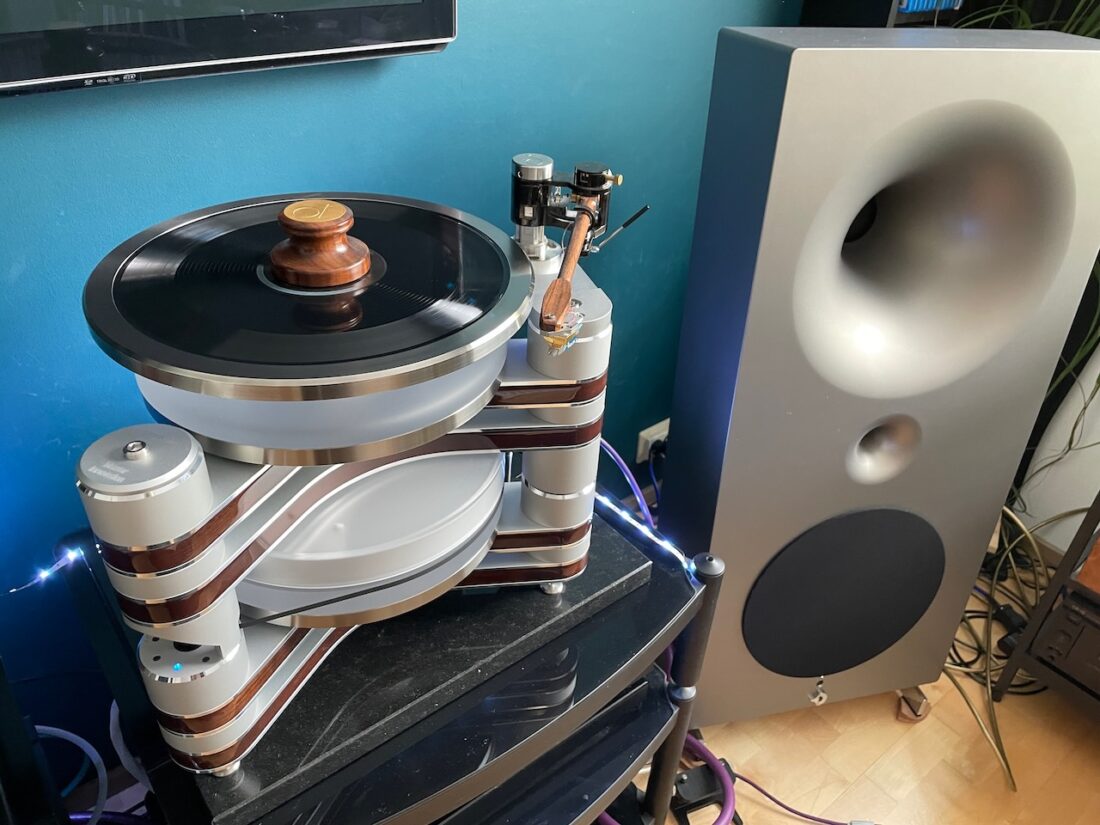
The Looks
The turntable is a striking sight, and not only due to its size and weight. I wanted the silver/wood version because the black one was so dark and somewhat monotone in appearance. The light translucent acrylic platters are very attractive and, at least for my taste, lighten the visual impact nicely. Durand’s wooden arm also fits the whole visually, as does the silver-colored outer clamp, which matches the stainless steel sub-platters. The turntable is also easy to use, although I can’t immediately think of a use for the 78 rpm motor setting, although I will be getting a mono arm later. The procedure for playing a record is simple: first you put the vinyl on the turntable, then put the outer clamp in place and then the middle clamp. Then the record is spun, dusted and treated with Furutech’s DeStat and then played. It takes a while for the turntable to get to the right speed, and stopping is slow as well.
As it happens, I have a Bergmann Galder/Odin combo in my office for comparison, although it is a bit cheaper overall – with the same cartridge “only” 30k! The Clearaudio setup, with the aforementioned battery power supply added, has a list price of just under 50k euros. Well, this turntable is hardly a beginner’s device anyway, but rather the final push of an uncompromising enthusiast. Of course, you can find a significant number of record players with even a six-figure price tag in Finland.
Hey, This Works!
The best word to describe the use and function of this turntable is ‘luxurious’. Everything works to perfection. Naturally, the turntable is completely silent and the speed is ultra precise. The player has a sensor that directly monitors the turntable’s (note: not the motor’s) rotational speed and makes the necessary corrections in real time. In measurements around the world, this player has been found to be among the quietest, though perhaps not the quietest. But somehow the whole construction is confidence-inspiring and probably guides things in the right direction, subjectively and emotionally. Despite its sturdiness and 60 kg mass, the player is not totally immune to mechanical contact. By tapping the base stone with my fingernail, I could make the sound come out of the speakers while the record was playing. Even so, Master Innovation is far from flimsy. Though it should be noted that there are no flexible / spring feet on this turntable.
Music, please!
Enough waiting, let’s play something already! For vinyl, that something is not Shelby Lynne. In keeping with the tradition of ‘Musiikin Ääni’ (a Finnish Hi-Fi magazine from the late 80s), let’s start with Speaker’s Corner’s version of La Folia, the magazine’s age-old vinyl reference. Well, here you can clearly hear why people fell in love with it back in the day. Back then, in the last millennium, we didn’t talk about timing, we talked about percussive sounds or, more accurately, transient response. But timing and acoustics is what this whole vinyl is! Durand / Soundsmith Paua has been a good combination here before, but Master Innovation raises it to another level. However, no rose without a thorn, my oversensitive Avantgarde speakers catch the noise of the RIAA when using the ‘low gain’ setting for impedance reasons. When the record is playing, the noise is not noticeable, but without the needle in the groove it is quite audible.
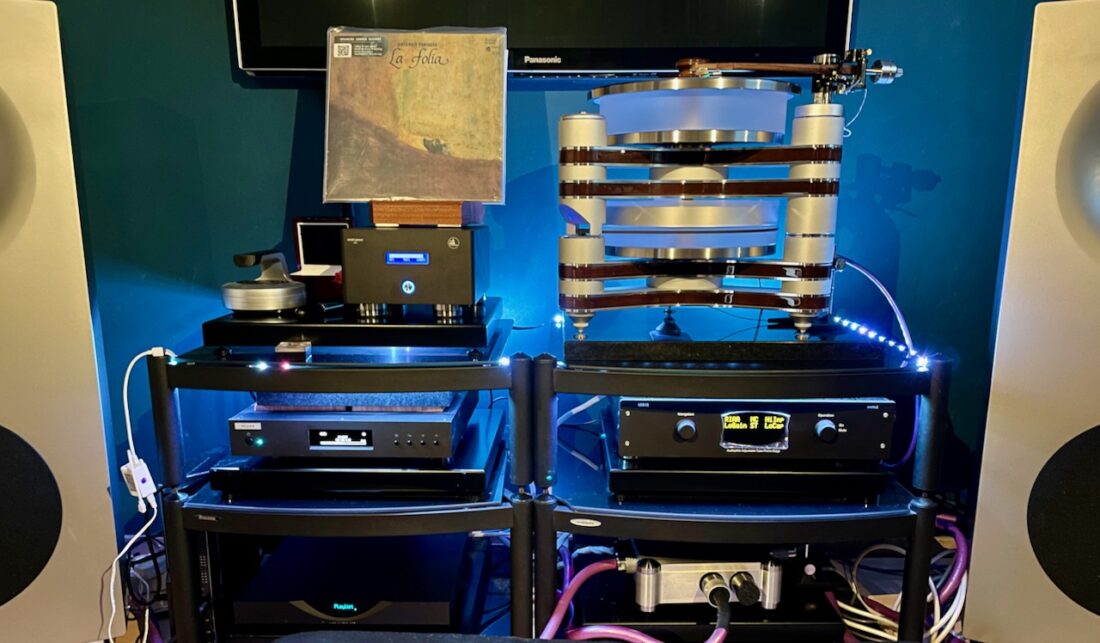
But fear not, La Folia is pure manna from heaven. There is plenty of dynamics and the acoustic instruments are natural, believable and – above all – a joy to listen to. The clichés work as intended, e.g. the deflating balloons and the aggressive lawn mower etc. But first and foremost, the music and the soundscape created by the instruments is just arresting. And as noted, there’s plenty of dynamics even at lower listening volumes. I have never heard a better overall version of this record. Sure, the Bergmann with its airbearing tonearm does a better job of hiding the surface noise of the disc, but the Clearaudio/Durand combo have nothing to be ashamed of either.
Then some Pet Shop Boys. The Introspective album features two vinyl favourites: Left to my Own Devices and You Are Always on My Mind. Here the layers of bleep-bloop synths, or rich separation – to put it another way – are accompanied by really beefy basses! I don’t know if it’s the mastering or what, but these vinyl versions really kick and separate. Here the tightness and bass resolution, as well as overall resolution, was first-class.
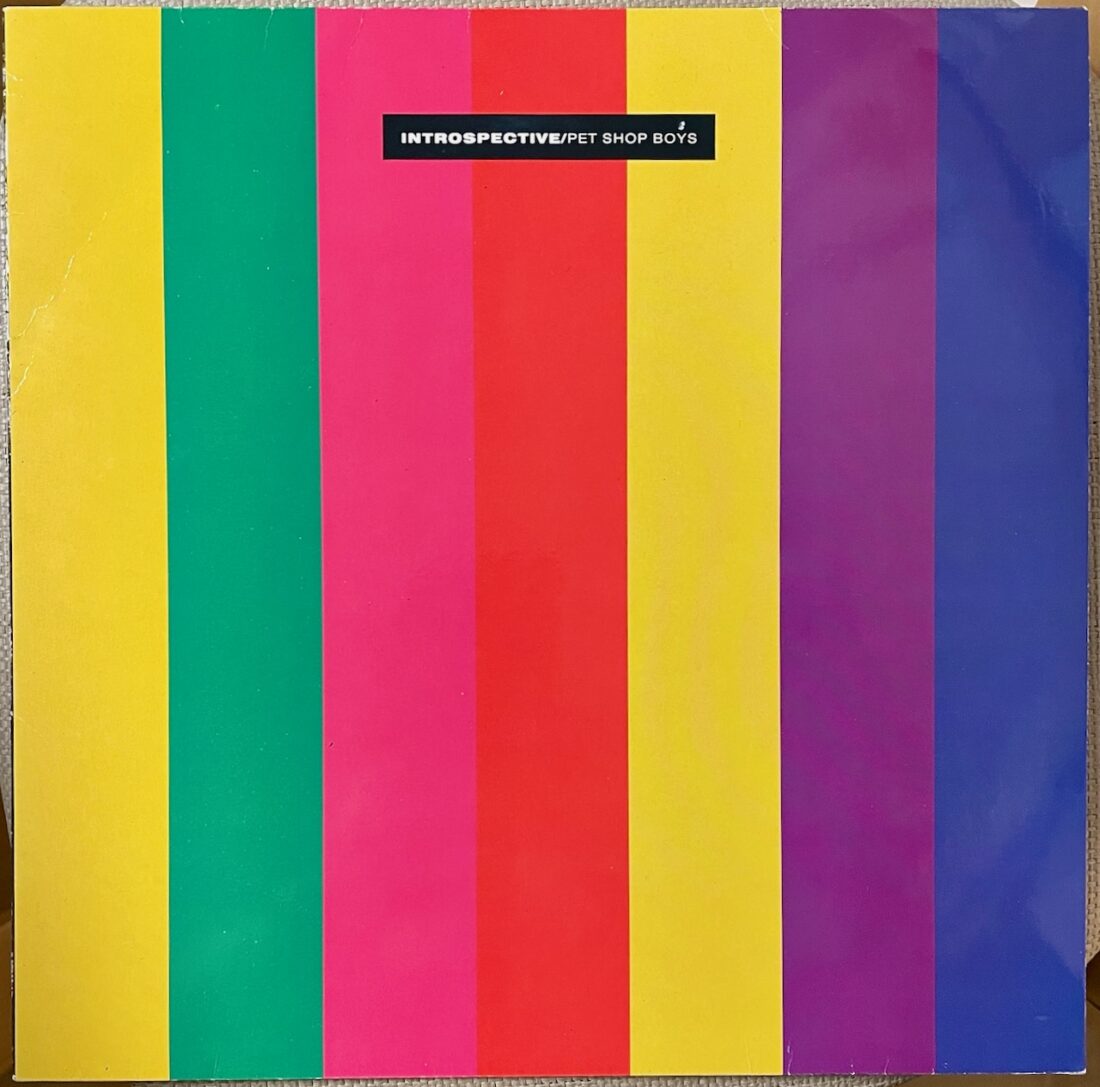
It very much seems that a good turntable is definitely not just dead weight, but contributes significantly to the overall sound. In other words, the record player is actually an active sound source and not just a component that adds unwanted noise. The Durand tonearm is good, but it hasn’t really shone like this before.
Classical and Prog Rock
Well, let’s keep on listening. Classical music on vinyl is always a challenge, because dynamics and unwanted noises are inevitably a tricky combination. I have been very unhappy with the press quality of Deutsche Grammphon’s first new vinyl release. The Mendelssohn Trio, conducted by Dudamel, has been nothing but snap, crackle and pop. This time most of the crackles were absent or at least significantly muted. The poor quality of the press still posed a challenge, but somehow it was significantly less distracting than usual.
As mentioned earlier, Bergmann’s airbearing Odin might have an edge here, but the Master Innovation gets the job done superbly even with Durand at the helm. In general, vinyl players of this quality offer something very profoundly magical in the naturalness and three-dimensionality of the soundstage. Even in orchestral music, the bass end growls superbly. However, it is the soundstage that attracts the most attention, with the sound being a cohesive whole and yet consisting of individual instruments, or at least groups of instruments, which can be discerned perfectly. In orchestral music, for example, the starting transients of strings also included low end components. These are notoriously difficult to record, let alone reproduce in playback. But this is the kind of experience that Master Innovation is able to extract from vinyl. If only my speakers were from the other end of Avantgarde’s range, the brand new Trios.
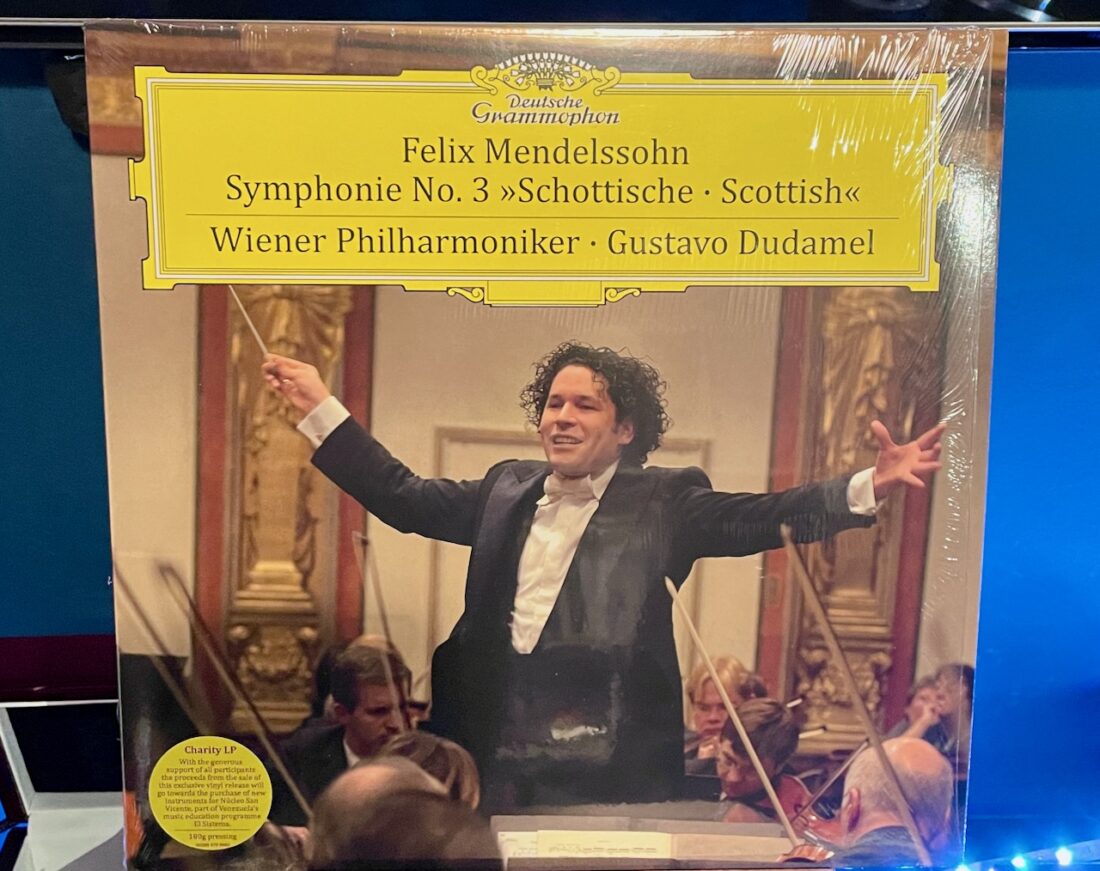
Finally, I repeated my brainfart from the last Hi-Fi convention, when I decideded to play ELP’s Tarkus A-side in full. At the convention, I enjoyed every second of it, even if I was only occasionally in the sweet spot. Here it lacked the extravagant slam, but boy, what distinction! The upper register of Lake’s bass, for example, is really interesting when the resolution allows you to hear all of it. Similarly, the layering of Emerson’s keyboard lines is really something when you can really get into them. I really enjoy Wilson’s 2012 remix too, but this is the real deal. It’s really baffling to listen to a 51 year old vinyl that sounds this good.
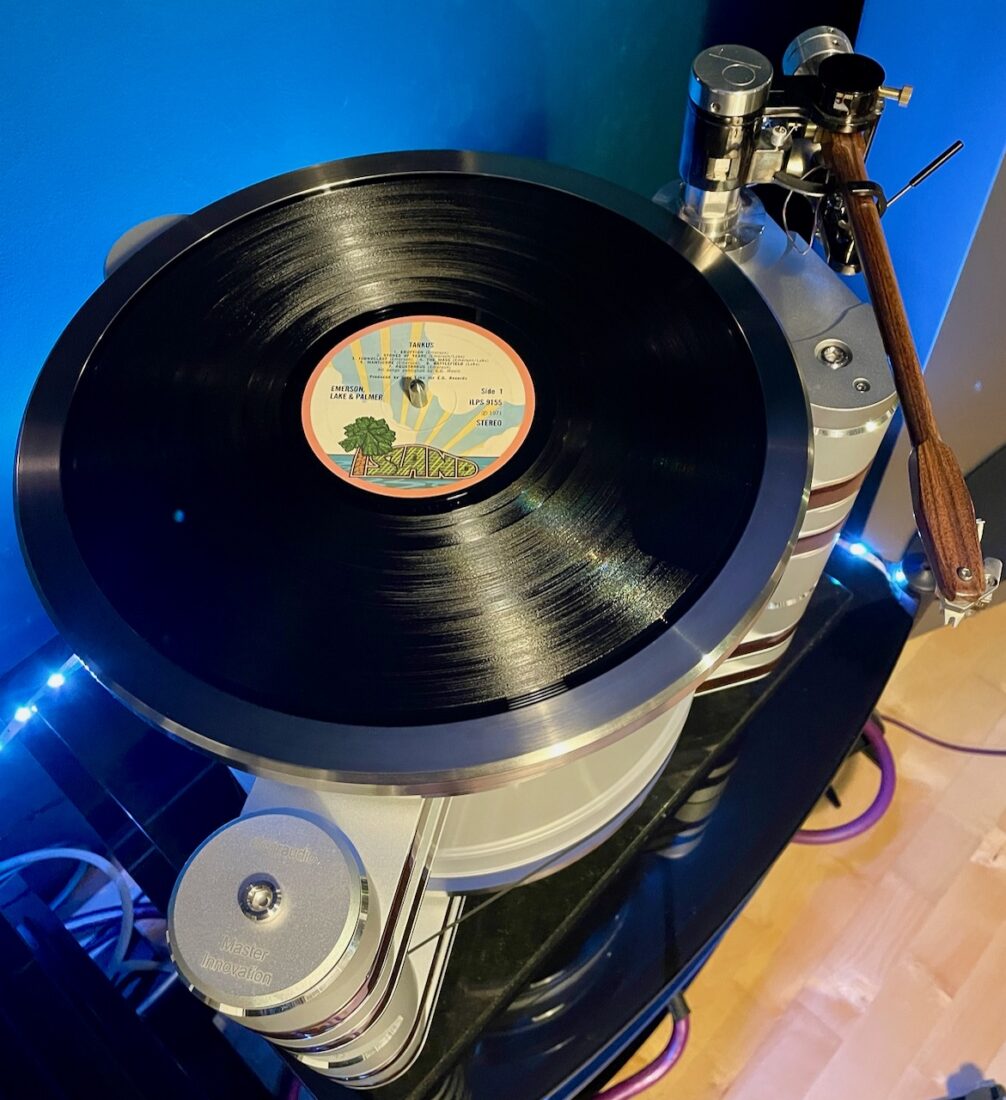
Final Thoughts
When I sum up Master Innovation’s performance, I have to raise my hat – and high. There are some minor usability issues, the platter accelerates and stops slowly, the turntable takes a lot of space, the power supply battery needs to be recharged from time to time, etc. But when the turntable, the tonearm and the cartridge are finely tuned together, the result is unprecedented, at least for me. The bass response is rich, the resolution is superbly good and the soundstaging performance is almost legendary. In my heart of hearts, there is still a special place for low noise and it is only here that Master Innovation and Durand lose to Bergmann’s flagship model. All in all, though, Master Innovation is the best turntable I’ve ever listened to (so far), the Bergmann comes fairly close, but Master Innovation tops the rest by a wide margin.